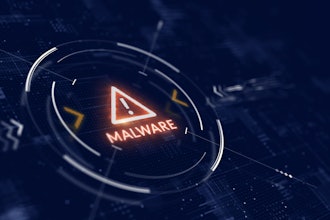
The digital revolution has transformed how businesses operate, but it's also opened a Pandora's box of cyber threats. As reliance on technology deepens, so do the potential consequences of cyberattacks. From data breaches to sophisticated hacking attempts, organizations face a constantly evolving threat landscape. This demands a proactive approach to cybersecurity — building resilience and fostering awareness throughout the organization.
In today's interconnected world, a single attack can have a ripple effect, impacting customers, partners, and entire business ecosystems. The growing complexity of these threats makes effective defense a constant challenge, highlighting the critical need for a comprehensive and proactive cybersecurity strategy. Failing to prepare adequately can lead to devastating financial losses, reputational damage and operational disruptions.
Emerging Risks and Attack Vectors
The cyber threat landscape is a constantly shifting battleground, with adversaries relentlessly developing new tactics and exploiting emerging vulnerabilities. Organizations must stay vigilant and informed to fortify cyber resilience and safeguard business continuity.
Advanced persistent threats (APTs), executed by well-resourced and determined threat actors like nation-states or cybercriminal groups, are a formidable challenge. These stealthy, targeted attacks persistently attempt to gain system access, evading detection for extended periods and often employ social engineering, zero-day exploits, and custom malware to compromise systems and exfiltrate data.
Ransomware and other malware attacks also wreak havoc. Ransomware encrypts data and demands ransom payments, disrupting operations and inflicting financial losses. Trojans, rootkits, and banking malware compromise data integrity and enable unauthorized access. Insider threats from disgruntled employees or third-party vendors and sophisticated social engineering attacks exploit human vulnerabilities, further exacerbating risks.
The proliferation of IoT devices and cloud computing has introduced new attack surfaces. IoT devices frequently lack robust security measures, providing potential entry points, and misconfigured cloud environments expose data and systems to breaches. Staying ahead of these evolving threats is crucial for maintaining a strong cyber resilience posture and ensuring business continuity in an increasingly hostile digital landscape.
A Robust Incident Response Plan
A robust incident response plan is crucial for effective cyber resilience and ensuring business operations’ continuity and integrity in the face of cyber threats. At its core, such a plan clearly defines roles and responsibilities for all stakeholders, from the security team to executive leadership — outlining specific duties and communication channels during an incident. This streamlined coordination maximizes response effectiveness and minimizes operational impact.
Equally vital is establishing transparent communication protocols for both internal and external stakeholders, including authorities, customers, partners, and others. Timely and clear communication facilitates a coordinated response, maintains trust, and mitigates reputational damage. The plan should also prioritize critical assets and systems, enabling targeted strategies for protection and recovery in an incident and focusing efforts on the most essential areas to maximize recovery success and minimize downtime.
Moreover, continuous testing through regular drills and simulations is essential for identifying gaps and weaknesses in the plan, allowing for necessary improvements. As threats evolve and technologies advance, the incident response plan must be updated to remain relevant and effective, ensuring organizations can adapt and respond appropriately to emerging cyber risks while maintaining operational resilience.
Creating a Culture of Cyber Resilience
Fostering a culture of cybersecurity resilience is imperative for organizations to bolster their overall cyber defenses and requires unwavering commitment from top leadership, who must prioritize cybersecurity as a strategic imperative. Leadership cultivates a sense of shared responsibility throughout the organization by demonstrating an understanding of risks and a willingness to invest in necessary resources.
Ongoing employee training is vital, including educating staff on current threats, incident response best practices, and the importance of vigilance. Tailored programs ensure everyone — from frontline workers to executives — grasps their role in maintaining a strong cybersecurity posture. Encouraging open communication and empowering employees to report concerns without fear creates an environment conducive to early threat detection and continuous improvement.
Moreover, organizations must promote a collaborative, proactive mindset that embeds cybersecurity into all functions and decision-making processes. While dedicated security teams are crucial, every employee should understand their responsibility in protecting digital assets and operational resilience. This collective effort is fostered by cross-functional collaboration, regular awareness campaigns, and integrating security into business processes.
Ultimately, a robust culture of cybersecurity resilience necessitates leadership commitment, ongoing training, open communication, and a pervasive sense of shared responsibility throughout the organization. This holistic approach empowers organizations to proactively identify and mitigate risks, enhancing their overall cyber resilience.
The digital landscape offers immense opportunity, but also harbors ever-evolving cyber threats, which is why effective defense necessitates a proactive approach. Organizations must prioritize building cyber resilience by staying informed about emerging threats and fostering a culture of security awareness, including establishing a robust incident response plan with clear roles, communication protocols, and prioritization of critical assets.
However, resilience extends beyond reactive measures. Leaders must also champion cybersecurity as a strategic priority, fostering a collaborative mindset across the organization. Ongoing employee training equips staff to recognize and report threats, while open communication creates a foundation for early detection and swift response. By prioritizing a culture of cybersecurity resilience, organizations can navigate the digital age with confidence, minimizing disruption and safeguarding their future success.
Eric Sugar is the President of ProServeIT and has over 20 years of experience working in the information technology and services industry.






















